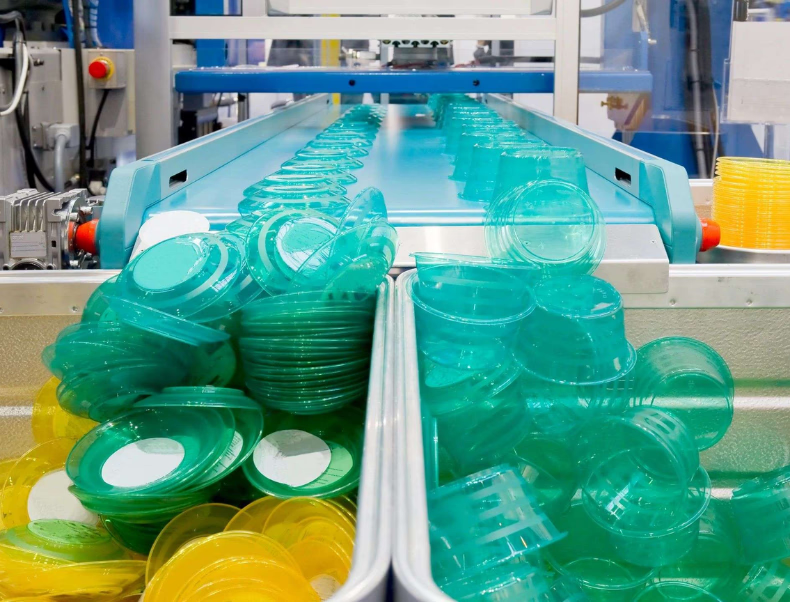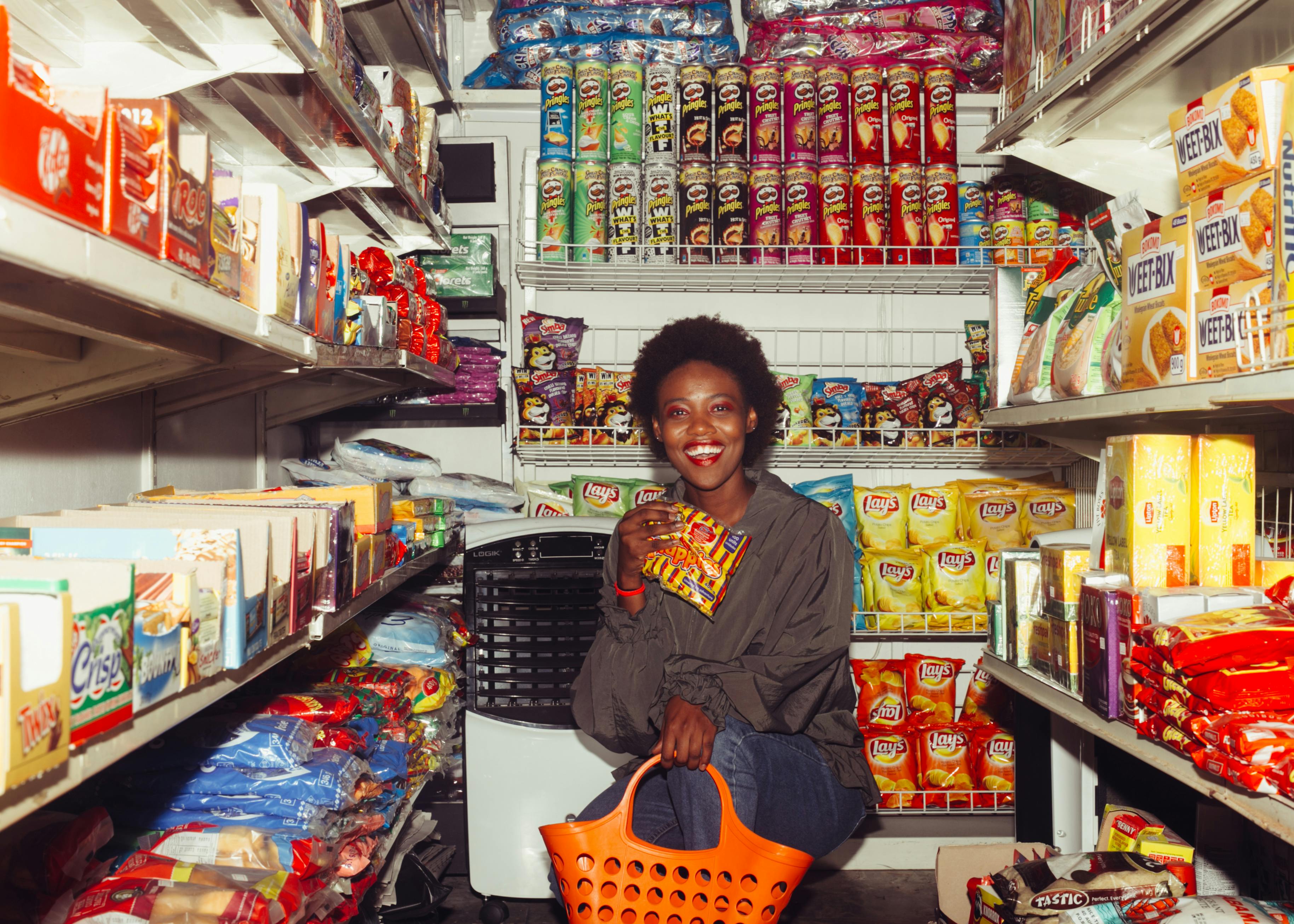Ditching Plastic: The Shift to Sustainable Packaging Alternatives

Can We Replace Plastic?
Plastic is a cheap and versatile material, but what about sustainable packaging alternatives? Plastic is the convenient choice for many use cases and many products we use daily are made from plastic, whether it’s our clothes, cars, phones, or kitchenware, plastic is everywhere. In fact, the world produces 400 million tonnes of plastic waste annually. As consumers become more environmentally conscious, many are reducing their plastic use by avoiding products made from or packaged in plastic.
As more sustainable options are introduced, consumers are choosing products that align with their environmental values, passing over other products. This can be a loss for companies as brand loyalty weakens and customer attraction decreases. However, barriers such availability, material strength and versatility, and cost are prohibiting the transition from plastic.
The question remains: Can we effectively replace common packaging materials like plastic with environmentally friendly alternatives that are scalable and cost-effective?
What is the environmental cost of current packaging strategies?
The impact of plastic goes beyond ingestion. Researchers have discovered microplastics in human lungs and the placenta, raising concerns about serious health risks such as cardiovascular disease and cancer. Beyond the threat to human health, plastic pollution poses significant dangers to marine life, soil health, and food safety. Additionally, plastic production relies heavily on fossil fuels, releasing harmful greenhouse gasses during extraction, manufacturing, and transportation—further contributing to climate change.
What Is Biodegradable Packaging?
Biodegradable packaging uses materials that break down under natural conditions through temperature, moisture, and microorganisms. Unlike traditional plastics which can take hundreds of years to break down, biodegradable materials (like those used for grocery bags) decompose in a matter of months under the right conditions.
Compostable packaging is a specific type of biodegradable material that uses materials to break down under specific conditions created by composting facilities. They break down into non-toxic components (water, carbon dioxide, and biomass) and within a specific time frame. This degradation in a set time frame and no harmful residues makes compostable products the more environmentally friendly choice.
Developing Packaging Material Alternatives
The materials used to create biodegradable and compostable materials for sustainable packaging alternatives are key to scaling use. A number of innovative solutions are emerging, each with unique properties suited to different types of packaging. Some promising materials include:
- Polylactic Acid (PLA): PLA is a biobased biodegradable material derived from lactic acid from a plant based source like corn, or sugarcane. It’s already widely used for applications such as cups, straws, and food containers. PLA fillers can reduce costs and enhance the strength of bottles, though it is important to use environmentally friendly fillers like the naturally occurring calcium carbonate.
- Mycelium (Mushroom Packaging): This innovative material uses the root structure of mushrooms, known as mycelium, to create sturdy, biodegradable packaging. Mycelium packaging is increasingly used for protective packaging, replacing materials like styrofoam. It is compostable and non-toxic to meet various packaging needs.
- Cellulose: Cellulose is derived from plant fibers like wood pulp and agricultural waste. It’s already used in packaging films and as a coating to replace plastic in applications like paper cups and food wrappers.
- Seaweed: Seaweed is an emerging area of innovation for biodegradable packaging. This natural material grows quickly, requires little to no land, no freshwater, and can help enhance the biodiversity of the ocean . Once discarded, it can decompose without leaving harmful residues.
Making Biodegradable Packaging More Scalable and Cost-Effective
One of the most significant challenges for biodegradable and compostable packaging is scalability—how to produce these materials at volumes and costs competitive with traditional plastics. There are several key strategies the CPG industry can implement to transition to sustainable packaging alternatives effectively:
- Optimize Production Processes: Advances in production technology, such as 3D printing, precision molding, and more efficient material synthesis, are helping to lower the cost of biodegradable packaging. As the demand for alternatives rises, economies of scale will drive further cost reductions, making them more accessible to businesses.
- Government Policy and Incentives: Legislation plays a critical role in the adoption of biodegradable packaging. Some governments have already introduced bans or restrictions on single-use plastics and imposed taxes on non-recyclable materials. Additionally, subsidies and incentives for companies investing in sustainable packaging solutions can encourage more widespread adoption.
- Infrastructure Development: Developing composting infrastructure on a large scale is necessary for compostable packaging to be a viable solution. Municipal composting facilities capable of processing PLA, mycelium, and other compostable materials can help ensure these products break down effectively. This is necessary for realizing the full environmental benefits of these materials.
- Public Awareness and Corporate Responsibility: As people become more environmentally conscious, businesses are responding by adopting more sustainable packaging. Brands that prioritize biodegradable or compostable options are capitalizing on consumer demand for sustainable alternatives while reducing their environmental impact.
- R&D and Material Innovation: Continued research and development into improved strength and versatility of existing materials, new materials, and improved biodegradability will be essential to meeting the growing demand. Innovations for materials that degrade faster, are versatile, and are even cheaper to produce than traditional plastics will be key.
How Companies Can Transition to Sustainable Packaging
The environmental cost of plastic, particularly single-use plastic packaging, is undeniable. It contributes to massive waste, harms ecosystems, and poses significant health risks. Biodegradable and compostable packaging offers a promising alternative, with innovative materials paving the way for a more sustainable future. However, the challenge remains: Can these alternatives be produced at a scale and cost that rivals traditional plastics?
Companies must take actionable steps to transition to sustainable packaging alternatives:
- Assess Current Packaging: Evaluate your packaging needs and identify opportunities to transition to biodegradable or compostable materials. Begin with low-hanging fruit, like replacing single-use plastics with alternatives such as PLA or pulp-based packaging.
- Work With Packaging Partners: Innovation is key to overcoming the challenges of cost and scalability. Working with suppliers and researchers to develop packaging with improved strength, adaptability, and biodegradability is key to creating practical solutions.
- Support Policies and Industry Consortiums: Supporting existing policies and working with industry consortiums can increase the demand for incentives, subsidies, and infrastructure development. This can aid in an effective industry wide transition to sustainable packaging, accelerating the shift away from single use plastic.
- Educate Consumers: Public awareness is driving demand for sustainable packaging. Clearly communicate your commitment to the environment by highlighting your use of biodegradable or compostable materials. This can strengthen brand loyalty and attract eco-conscious consumers.
- Scale Gradually: Start by integrating sustainable packaging into specific product lines or regions, then expand as costs decrease and infrastructure improves. Leverage economies of scale to make the transition more cost-effective over time.
Key Takeaways
The environmental impact of plastic, particularly single-use plastic, is undeniable. With packaging being a major contributor to environmental issues and increasingly scrutinized by stakeholders, companies must take the lead in adopting sustainable packaging alternatives. While plastic’s convenience and cost-effectiveness are hard to overlook, an industry-wide effort is essential to drive this transition.
To implement biodegradable and compostable packaging effectively using materials like PLA, mycelium, cellulose, and seaweed, developers must create scalable and cost-efficient options and build the necessary infrastructure to ensure their full environmental benefits. Innovation, government incentives, infrastructure investment, and corporate responsibility will be key for a successful transition.
At the company level, assessing current packaging, collaborating with suppliers to develop practical alternatives, supporting policies that promote sustainability, and educating consumers will position businesses as leaders in the transition. By reducing packaging where possible and innovating for the rest, companies can align with environmental goals and meet growing consumer demand for sustainable practices.
FAQ
1. How can companies know which sustainable packaging option actually has the lowest carbon footprint?
Understanding which material truly minimizes environmental impact requires a full Life Cycle Assessment (LCA). While materials like PLA, mycelium, and cellulose all show promise, their carbon performance can vary depending on sourcing, manufacturing, transport, and end-of-life treatment. Conducting LCAs helps companies compare materials across these stages and make data-driven choices.
2. What’s the most effective way to measure the environmental impact of our packaging choices?
The most comprehensive way to measure packaging impact is through an LCA, which quantifies emissions, resource use, and waste from production through disposal. Traditional manual LCAs can be complex and time-intensive, but digital solutions streamline this process. By integrating product and supplier data, CarbonBright enables companies to assess the environmental performance of each packaging design or material choice accurately and efficiently.
3. How can we make sure our sustainable packaging meets new carbon reporting and ESG requirements?
With the introduction of frameworks like the EU’s CSRD and SEC climate disclosure rules, accurate emissions data is essential. Sustainable packaging choices must be backed by transparent, verifiable impact data to comply with these standards. AI-powered platforms help companies align with global sustainability and reporting requirements by providing standardized, audit-ready carbon data across packaging materials and product portfolios, simplifying ESG reporting and regulatory compliance.
4. Is switching to biodegradable or compostable packaging always better for the environment?
Not necessarily. While biodegradable and compostable packaging options reduce plastic pollution, their environmental benefit depends on several factors—such as raw material sourcing, manufacturing energy, and whether local composting infrastructure exists. Some alternatives may even have higher emissions than traditional plastics if not managed properly. Conducting AI-powered LCAs allows companies to assess these trade-offs and identify the packaging options that deliver true sustainability benefits.
5. How can brands prove their packaging changes are truly sustainable to consumers and stakeholders?
Today’s consumers expect transparency and accountability from the brands they support. To build trust, companies must substantiate their sustainability claims with measurable data. Providing verified, science-based insights through automated LCAs, helps brands confidently communicate the carbon savings and environmental benefits of their packaging innovations. This not only strengthens brand reputation but also demonstrates genuine commitment to sustainability goals.



